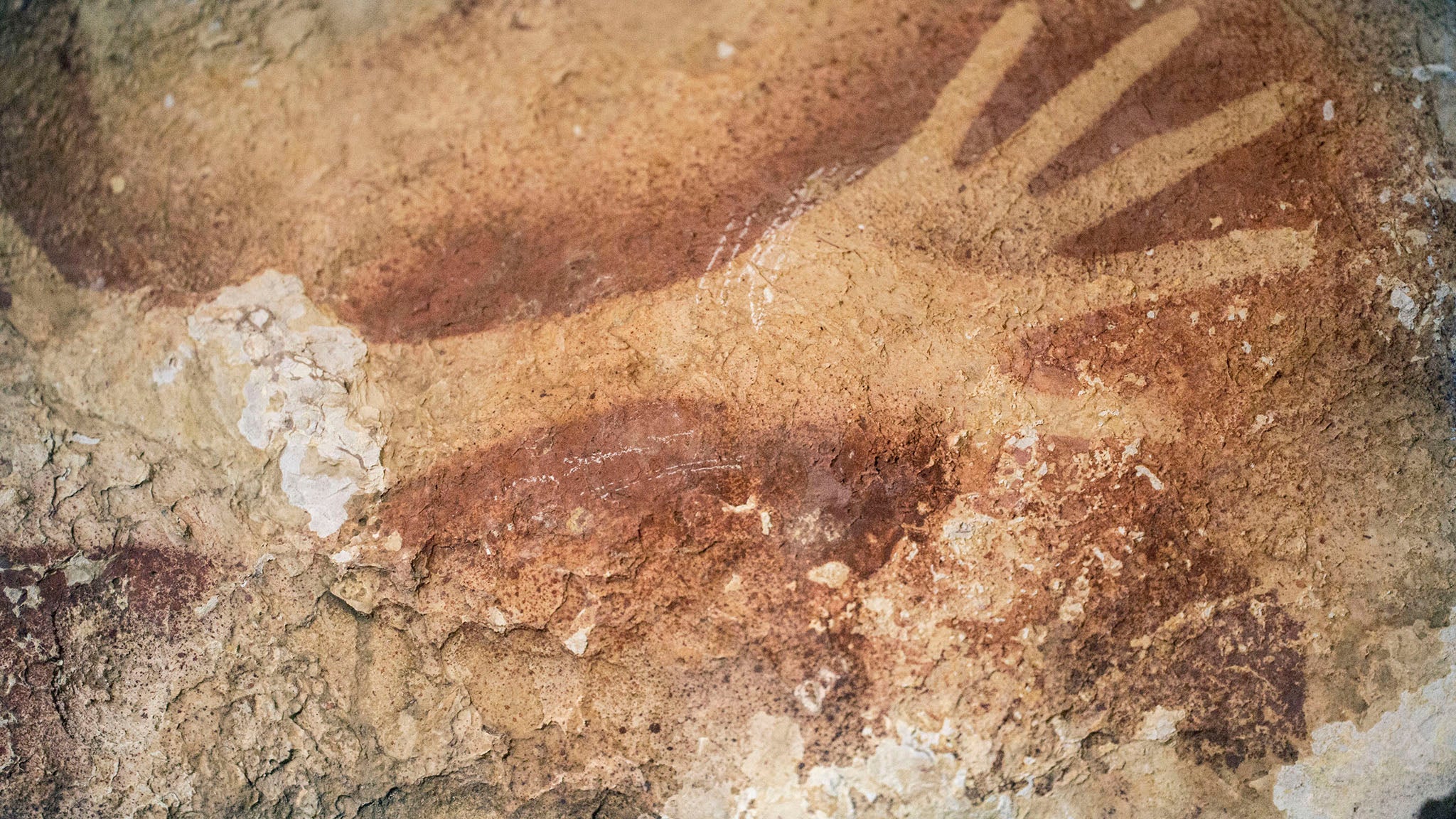40,000-year-old cave paintings include 'oldest hand stencil known to science'
Drawings in a cave in Borneo have been found to be 30,000 years older than previously thought

Art history will have to be rewritten after cave drawings in Indonesia – including one of a “pig deer” - were found to be 40,000 years old, older than European art previously thought to be the most ancient, providing the first evidence that our human ancestors were creating art in the region at that time.
The drawings and human hand prints are at least as old the famous prehistoric cave paintings previously uncovered in Spain and France and scientists believe they are evidence of an even earlier dawn of creativity in humans.
One of the Indonesian hand prints, pegged as at least 39,900 years old, is now the oldest hand stencil known to science, according to a new study published in the journal Nature. It is comparable in age to the world's oldest-known rock art image, a red dot from Spain's El Castillo site.
Two detailed drawings of animals – the “pig-deer” - and a number of other hand stencils in red are believed to be between 35,000 and 40,000 years old – which is the broadly approximate time frame that the European cave paintings are believed to have been created in.
Most of the artwork was created with a pigment called red ochre and its mulberry colour is remarkably still vibrant. Experts had previously estimated that the cave paintings, which were discovered in 1950, were maybe 10,000 years old.
It wasn’t until 2011 that scientists noticed some strange outcroppings — described as "cave popcorn" — on the drawings. Those mineral deposits made it possible to test the levels of decay in the element uranium. The minimum age. Was found to be near 40,000 years.
"Whoa, it was not expected," recalled study lead author Maxime Aubert, an archaeologist and geochemist at Griffith University in Australia. "It was previously thought that Western Europe was the centerpiece of a symbolic explosion in early human artistic activity such as cave painting and other forms of image-making, including figurative art, around 40,000 years ago," she told Reuters.
Looking at the paintings, the details on the animal drawings are "really, really well-made," Aubert told AP. "Then when you look at it in context that it's really 40,000 years old, it's amazing."
The artists made hand images by blowing or spraying paint around hands pressed against rock surfaces.
"Archaeologists love to say things like 'ability X is what makes us human,' but in the case of the origins of art they are probably right. Our species is compelled to make art. And in one form or another, it is inherent in almost everything we do," archaeologist Adam Brumm, also of Griffith University, told Reuters.

Aubert thinks that because the European and Indonesian cave paintings date from around the same time, it either means art developed separately and simultaneously in different parts of the world or "more likely that when humans left Africa 65,000 years ago they were already evolved with the capacity to make paintings.”
To date very little ancient art has been found in Africa because the geology doesn't preserve it.
Additional reporting by PA and Reuters
Join our commenting forum
Join thought-provoking conversations, follow other Independent readers and see their replies
0Comments